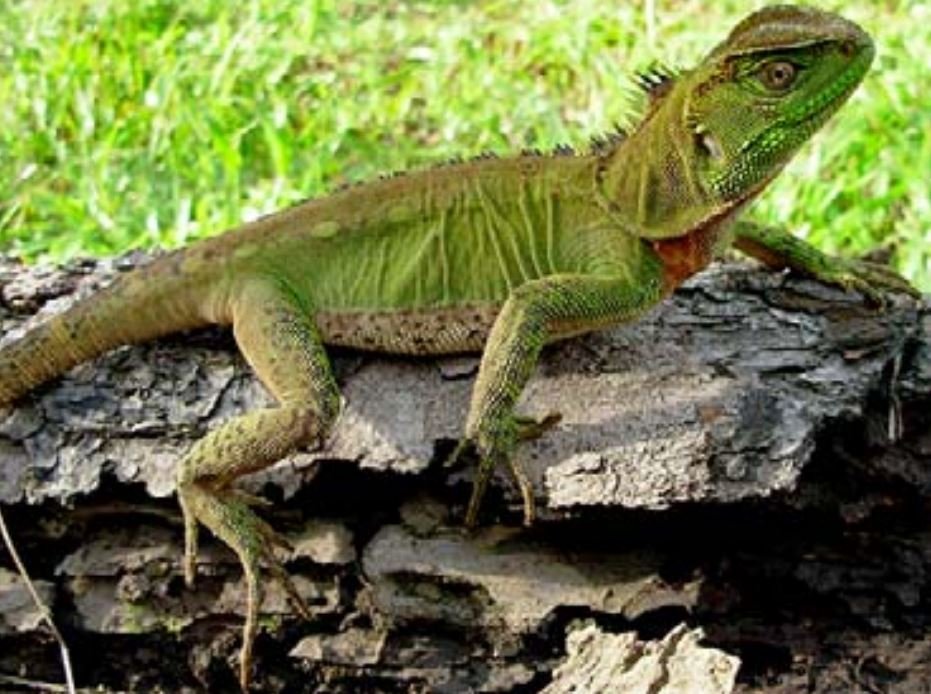Imagine a corner of the planet where the Amazon rainforest meets an astonishing diversity of life. San Martín, in Peru, is one of those magical places. The region is not only a paradise for nature lovers, but also a bastion of herpetological biodiversity. What is herpetofauna? This is the set of reptiles and amphibians that live in a specific region. In San Martín, this variety is especially rich and fascinating. In this article, we invite you to discover the herpetofauna of San Martín, exploring its incredible diversity and learning about the species that make this place a true biological treasure.

What is Herpetofauna and why is it important?
Herpetofauna includes all the reptiles and amphibians of a given region. These animals play crucial roles in ecosystems, from controlling pests to indicating environmental health. The herpetofauna of San Martín is not only a reflection of the biological richness of the Peruvian Amazon, but also a key to understanding and conserving these vital ecosystems.
Ecological Importance of Herpetofauna
Reptiles and amphibians are essential ecological indicators. Their presence and diversity reflect the health of ecosystems. In addition, they act as controllers of insects and other small animals, maintaining the natural balance. The conservation of the herpetofauna of San Martín, therefore, is essential not only to preserve biodiversity, but also to guarantee the ecological stability of the region.
Diversity of Reptiles in San Martín
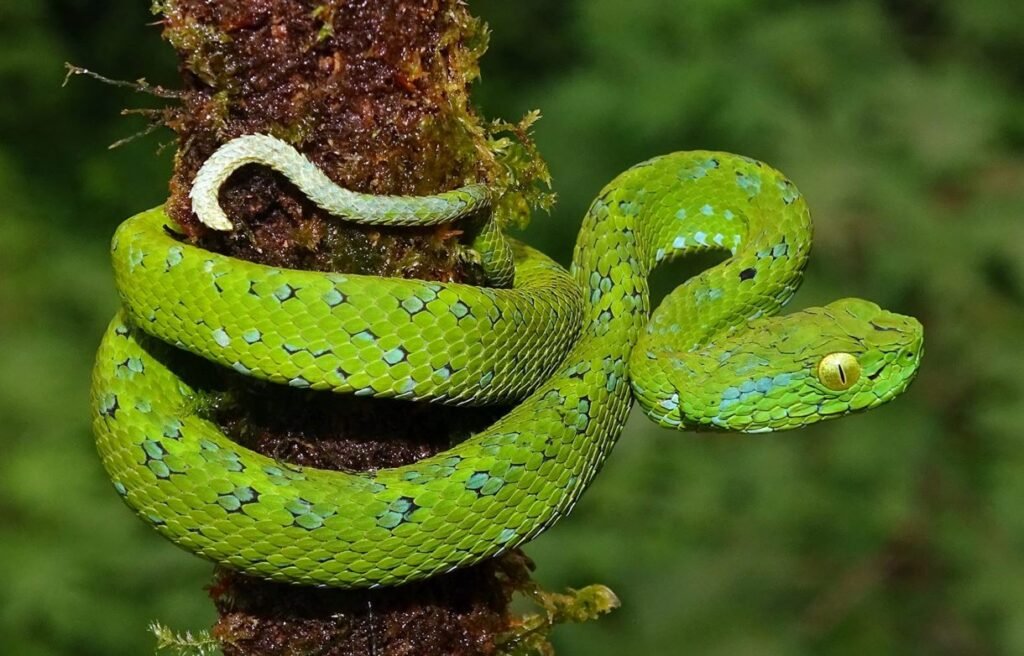
Common Reptile Species
In San Martín, you can find an impressive variety of reptiles. From majestic snakes to small but intriguing geckos, the region is home to a range of species that capture the imagination of scientists and nature lovers alike.
Snakes
- Boa constrictor: This snake is one of the most emblematic of the region, known for its size and its ability to constrict.
- Dipsas catesbyi: A non-venomous snake that feeds primarily on snails.
Lizards and Geckos
- Anolis fuscoauratus: A small lizard known for its ability to change color to camouflage itself.
- Thecadactylus solimoensis: A medium-sized gecko frequently found in trees in the region.
Rare and Endemic Species
San Martín is home to several rare and endemic species found nowhere else in the world. These unique species underline the importance of the region to global biodiversity.
Endemic Species
- Enyalioides laticeps: An endemic lizard distinguished by its bright colors and unique patterns.
- Pseudogonatodes guianensis: A small gecko that is extremely difficult to find due to its effective camouflage.
Amphibian Diversity in San Martín
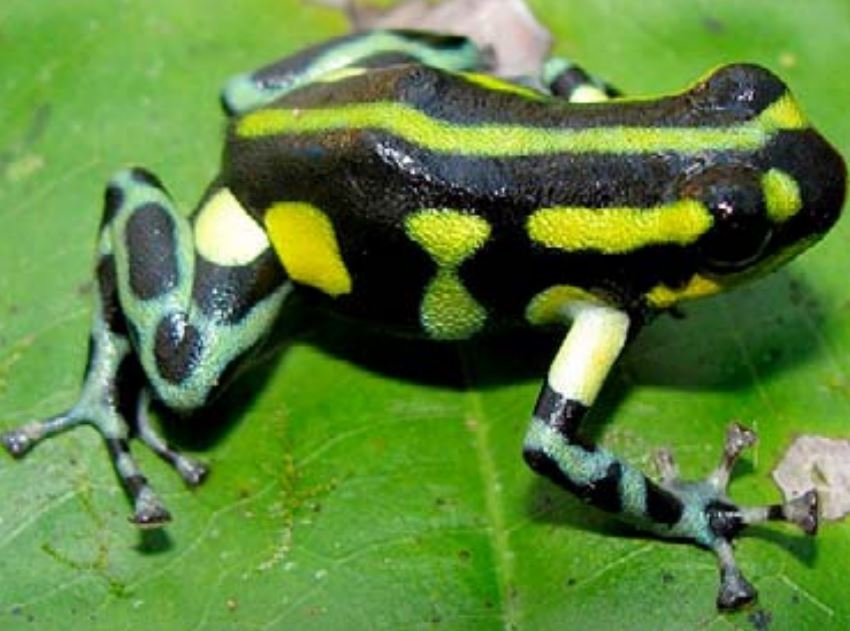
Common Amphibian Species
San Martín’s amphibians are as varied as its reptiles, with a multitude of frogs and toads inhabiting the region’s diverse ecosystems.
Frogs
- Dendropsophus rhodopeplus: A tree frog known for its vibrant colors and distinctive call.
- Ameerega bassleri: A poisonous frog that uses its bright colors as a warning to predators.
Toads
- Rhinella margaritifera: A toad commonly found in the region’s forests, known for its rough skin and ability to live in diverse habitats.
Rare and Endemic Species
As with reptiles, San Martín is home to amphibians that are rare or endemic, further highlighting the conservation importance of this region.
Endemic Species
- Chiasmocleis abofoa: A tiny frog only found in the specific forests of Saint Martin.
- Callimedusa tomopterna: An amphibian with a unique appearance, known for its nocturnal habits and peculiar song.
Conservation of Herpetofauna in San Martín
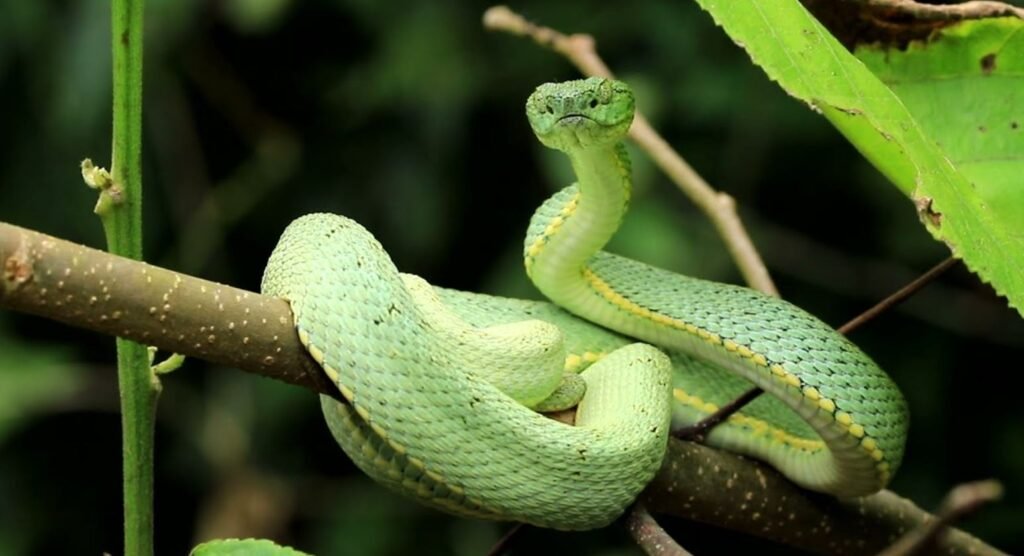
Threats to Herpetofauna
The herpetofauna of San Martín faces multiple threats that put its survival at risk. Among the main threats are deforestation, climate change and pollution.
Deforestation
The clearing of forests for agriculture and livestock reduces the available habitat for many species, seriously affecting biodiversity.
Climate change
Climate change alters temperature and precipitation patterns, affecting the habitats of reptiles and amphibians and, in some cases, leading to the extinction of sensitive species.
Conservation Efforts
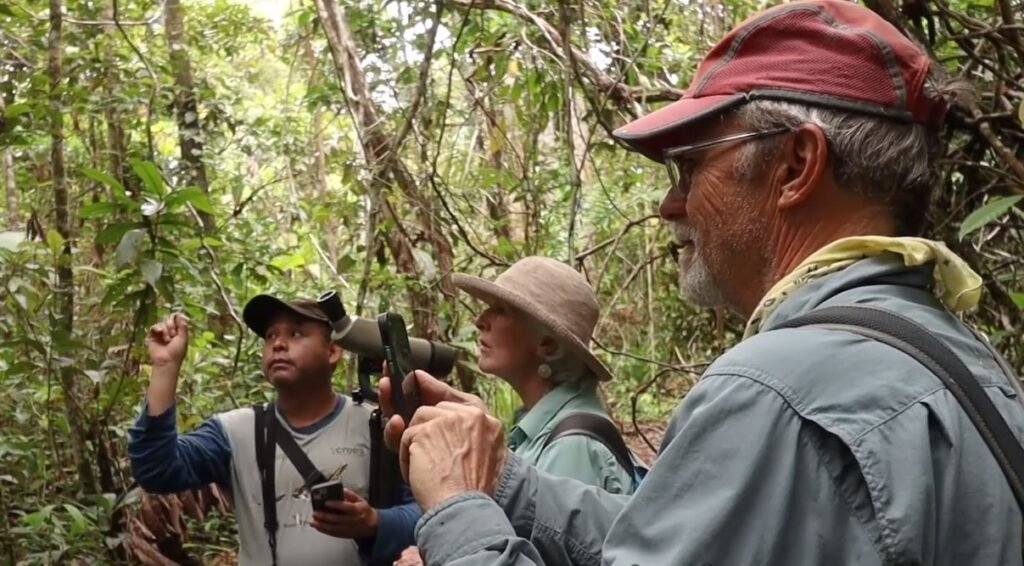
To protect this incredible biodiversity, several conservation programs and strategies have been implemented in San Martín.
Reserves and Protected Areas
The creation of nature reserves and protected areas is one of the most effective strategies to conserve herpetofauna. These areas provide a safe haven where species can thrive without the pressure of human activities.
Education and Awareness Programs
Educating local people about the importance of herpetofauna conservation is crucial. Environmental awareness and education programs help create a culture of respect and protection towards these animals.
Research and Studies in San Martín
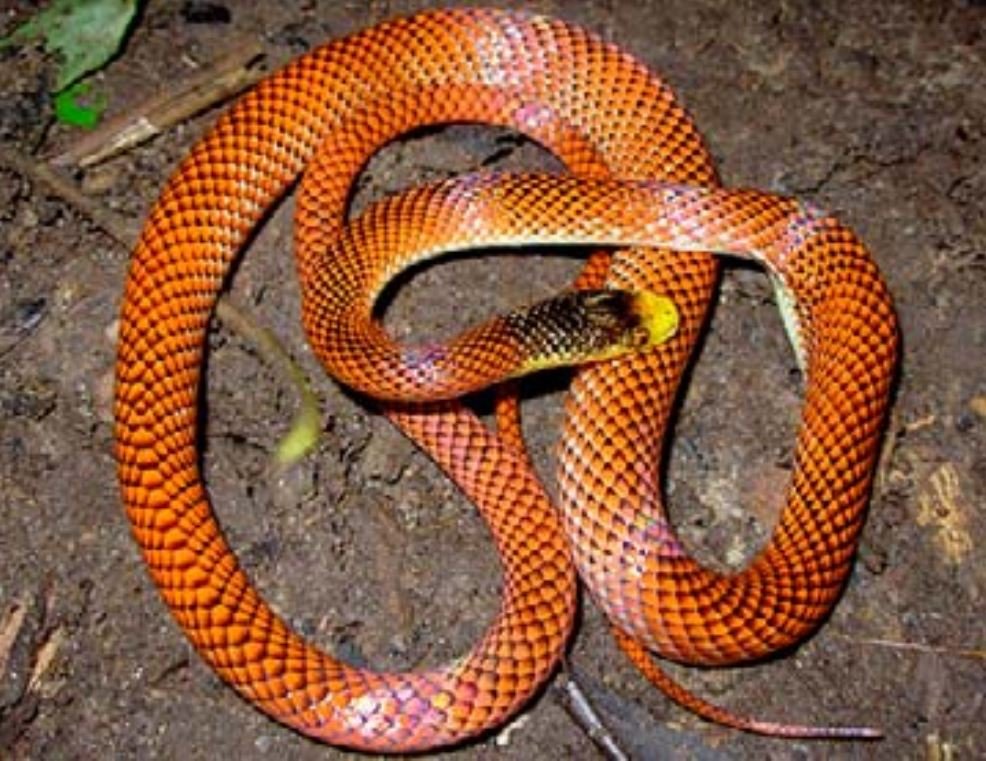
Main Studies Carried Out
Numerous studies have documented the diversity of reptiles and amphibians in Saint Martin, providing a solid foundation for conservation efforts.
Recent studies
- Investigation of the Ojos de Agua Future Forests Conservation Concession: This study has cataloged a vast number of species, highlighting the richness of the herpetofauna in the region【Asociación Bosques del Futuro Ojos de Agua ABOFOA】.
- Monitoring Reptile and Amphibian Populations: Continuous monitoring programs are essential to understand population trends and ecosystem health.
Future Research Areas
Despite numerous studies, there is still much to discover about the herpetofauna of San Martín. Areas of future research include the reproductive biology of endemic species and the impact of climate change on the distribution of these species.
What educational activities are available?

In San Martín, several educational initiatives are underway, including:
- School workshops: Programs in local schools to teach children about biodiversity and conservation.
- Volunteering: Opportunities for people around the world to get directly involved in conservation projects.
- Talks and seminars: Events to educate the population about threats to herpetofauna and measures to protect it.
Frequently asked questions about herpetofauna in San Martín

1. What is herpetofauna?
Herpetofauna includes all the reptiles and amphibians of a specific region. In San Martín, it encompasses a diversity of species that inhabit different ecosystems of the Peruvian Amazon.
2. Why is it important to conserve herpetofauna?
The conservation of herpetofauna is crucial because these species are indicators of ecosystem health, help control populations of insects and other pests, and are an integral part of the food chain.
3. What can I do to help in the conservation of herpetofauna in San Martín?
You can support conservation projects through donations, participate in volunteer programs, and promote sustainable and environmentally friendly practices. Plus, responsible ecotourism is a great way to contribute.
4. Where can I learn more about the herpetofauna species in San Martín?
The Peruvian Amazon Research Institute (IIAP) and the Ojos de Agua Future Forests Association (ABOFOA) are excellent sources of information. You can also consult scientific publications and participate in local seminars and workshops.
5. Is it safe to interact with herpetofauna in their natural habitat?
While it is safe to observe these animals in their natural habitat, it is important to do so with respect and caution, following the recommendations of local guides to avoid disturbing the species and ensure everyone’s safety.
6. What should I do if I find a reptile or amphibian in danger?
If you find a reptile or amphibian in danger, contact local authorities or a conservation organization so they can take the necessary steps to protect the animal.
The herpetofauna of San Martín, Peru, represents a fascinating and vital facet of the biodiversity of the Amazon. With a wealth of species ranging from the most common to the endemic and rare, the region is a true paradise for nature lovers and scientists. However, preserving this diversity requires concerted conservation and awareness efforts. By learning more about these reptiles and amphibians and supporting conservation initiatives, we can help protect these natural treasures for future generations.
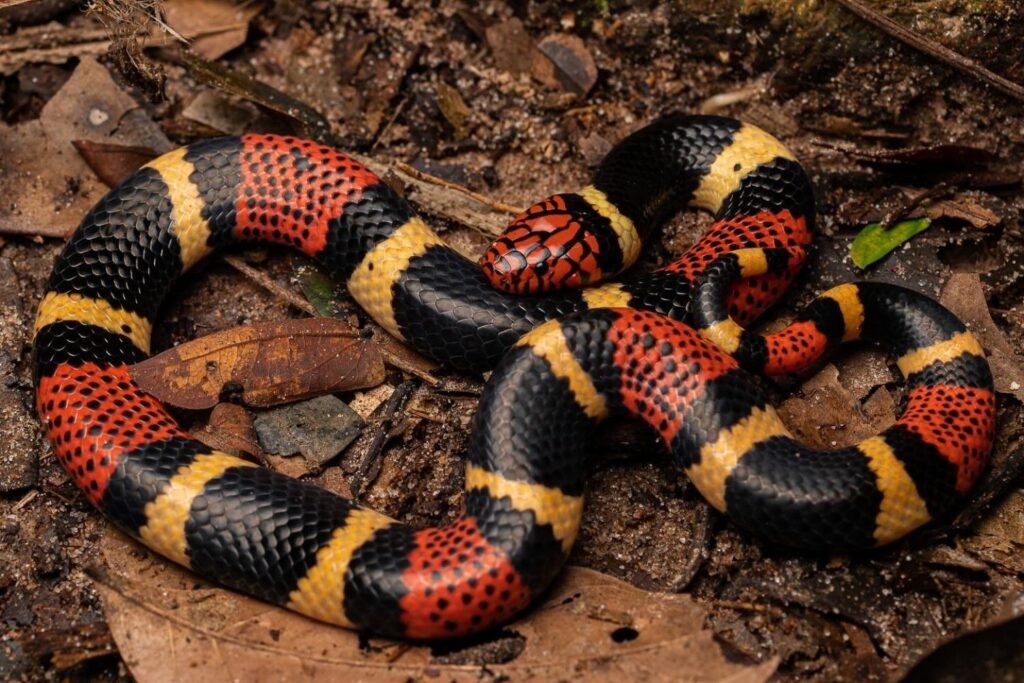
In San Martín, each snake, lizard, frog and toad tells a story of evolution and adaptation, offering a window to the past and hope for the future. Join us in protecting and celebrating the herpetofauna of San Martín, Peru!
Explore the incredible herpetofauna of San Martín, a biological treasure in the Peruvian Amazon where a wide variety of reptiles and amphibians coexist, from emblematic snakes to endemic frogs and geckos. Now that you know everything about herpetofauna tourism in San Martín, book today and contact Lorenzo Expeditions, the only company specialized in exploring Amazonian herpetofauna, to schedule your trip!

